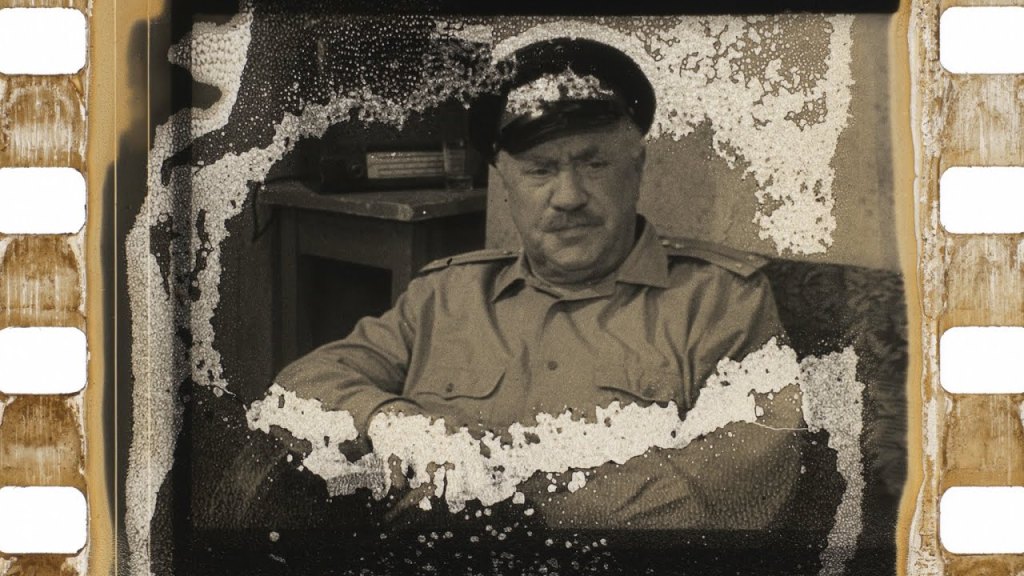
Welcome to Top of the Docs, Flip Screen’s hub for all things documentary. This weekly column takes a look at the crème de la crème of non-fiction media. This week we will be heading back to IFFR for the second part of their festival where there is a new Bill Morrison film to dig into!
What lurks at the bottom of the ocean? None of us can know for sure, its murky depths are one of the few mysteries left on this planet. What you might not expect to find there is film cannisters, yet this is exactly what has been happening in the North Sea over the past decade or so. Cannisters containing discarded Soviet-era films continue to be caught in fisherman’s trawls, and of course, this alone caught the interest of director Bill Morrison, who is no stranger to exploring the strange world of cast-off cinema. However, the repeated appearances of actor Mikhail Zharov piqued the director’s interest, and thus began The Village Detective: A Song Cycle.
Zharov’s career spanned across 70 films, from the very beginning of the Soviet period, right up until the late 1970s. His roles varied, but his knack for capturing the importance of historical moments in Soviet history is quite uncanny. Morrison takes us through a number of Zharov’s films through the use of the found films, the water damage making the Soviet society look almost alien, from a previous world. We don’t often think of the Soviet Union as a lost civilization, however, in The Village Detective it often feels like one.
The film is perhaps more conventional than some of Morrison’s earlier works such as Decasia (2002) or even The Great Flood (2012). The use of talking heads and more contemporary footage to provide context to Zharov and the society in which he lived makes the film feel more accessible to viewers. No prior knowledge of Soviet cinema is required and in many ways the films acts as an excellent entry point.
What is fascinating about The Village Detective, as well as perhaps Morrison’s recent practice, is the ability to take a piece of unwanted footage that was tossed away many years ago, and use the documentary form to archive it in such a way that its context and value are maximised. With this film, Morrison is acting less the recycler and more the archivist.
With all of the beautiful decayed visuals that we can expect from a Morrison film, The Village Detective sees his practice evolve into something that sees the celluloid he uses as an object of interest, something to centre the film around rather than something simply to be used to evoke the wider story. Though perhaps slightly simpler than some of his other works, The Village Detective is a fantastic entry point for all those looking to explore Morrison’s work.


Leave a comment